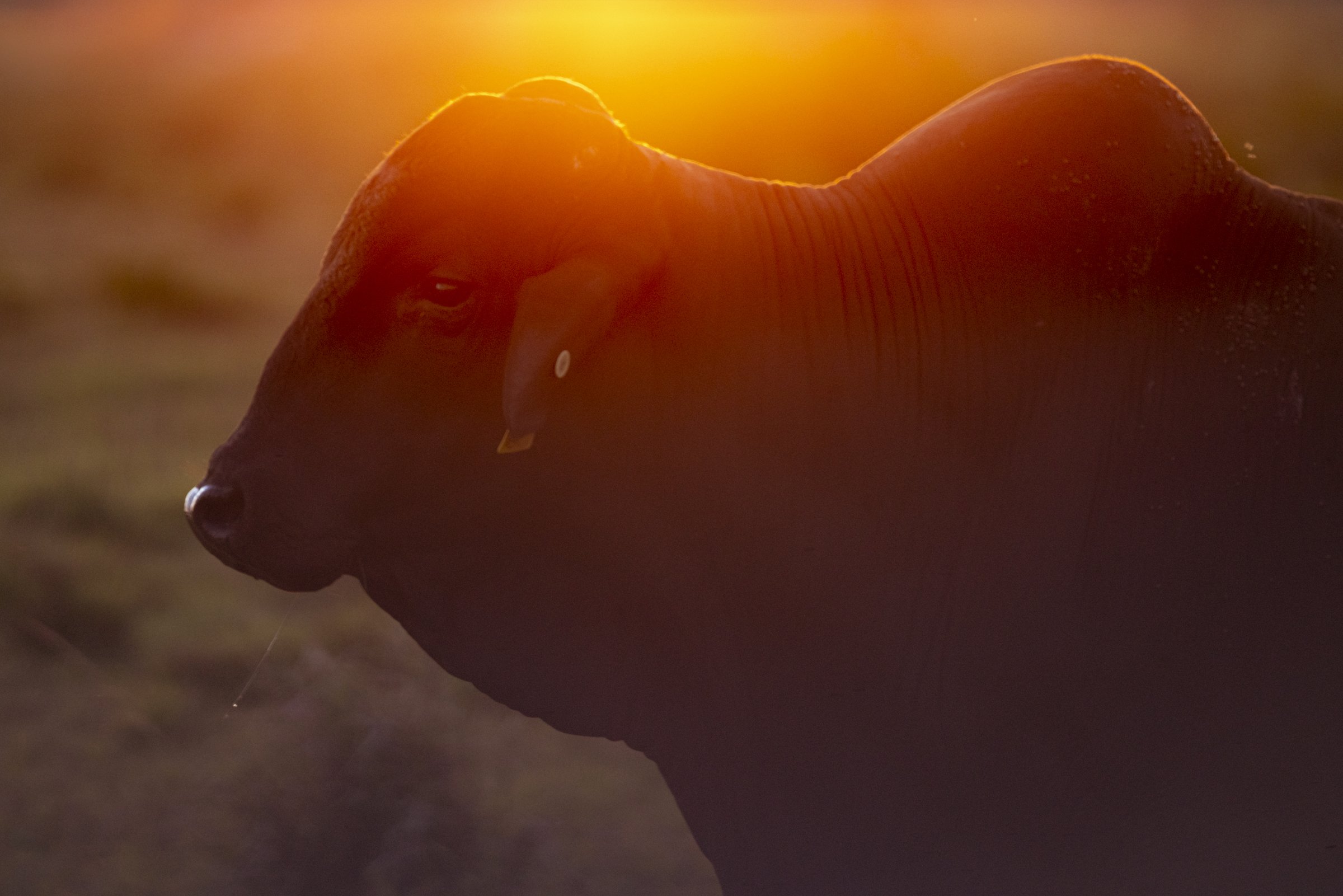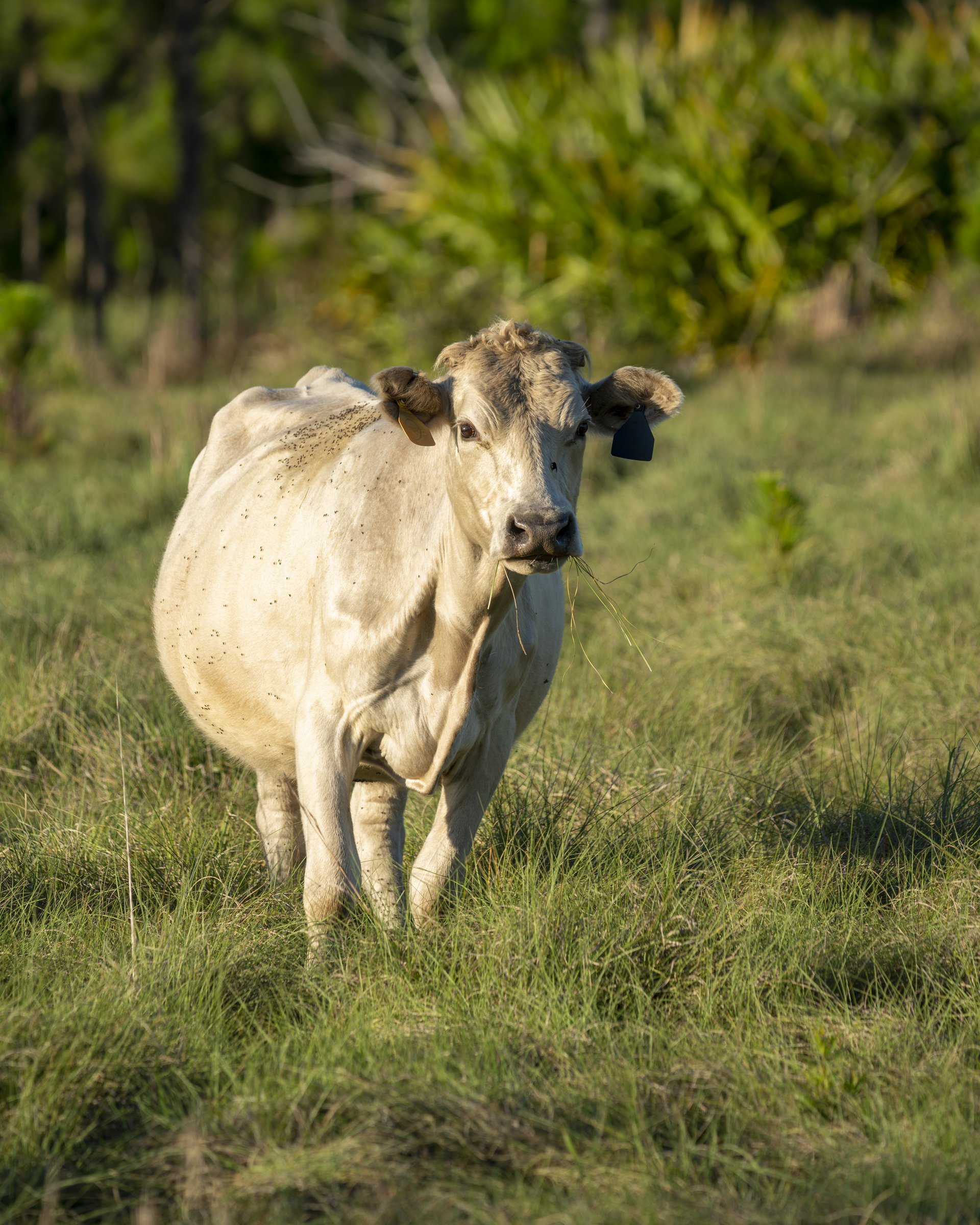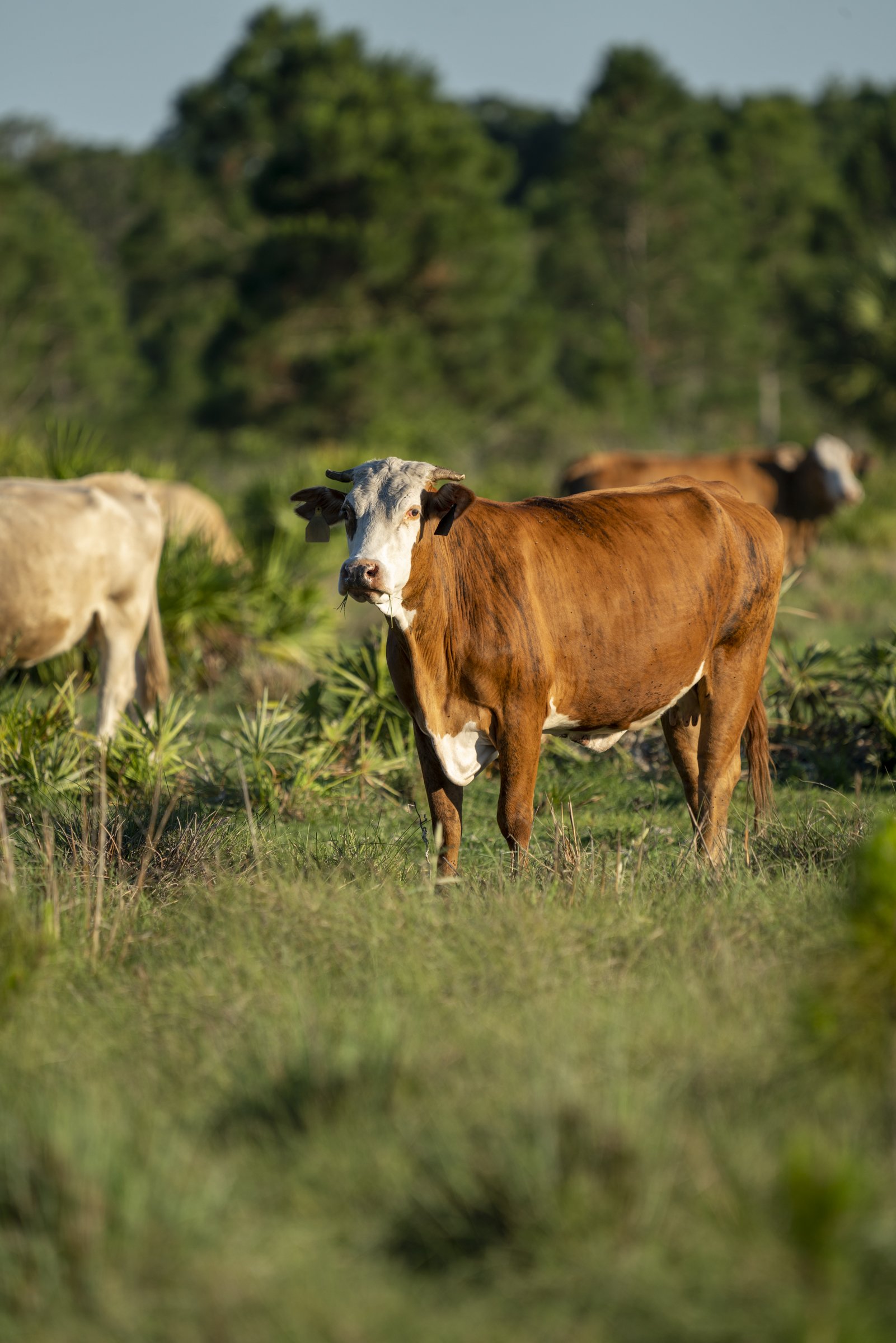Conservation Florida, NRCS, Permanently Protect 527-Acre XL Ranch Lightsey Cove within the Florida Wildlife Corridor
A live oak on XL Ranch Lightsey Cove. Photo by Adam Bass,
The scenic landscape of XL Ranch Lightsey Cove will safeguard critical wildlife habitat and 20,00 feet of shoreline in the Northern Everglades
Sebring, Fla. (May 19, 2023) — Conservation Florida, a leader in statewide land conservation, in partnership with the Natural Resources Conservation Service (NRCS), has permanently protected 527 acres within the Florida Wildlife Corridor.
Thanks to partnerships with the NRCS and the Lightsey family, the land conservancy purchased a conservation easement on XL Ranch Lightsey Cove. A conservation easement will safeguard the property's incredible habitat for Florida's rare and endangered species forever. XL Ranch Lightsey Cove was deemed a Grassland of Special Environmental Significance (GSS) in Florida under the NRCS' Agricultural Conservation Easement Program, one of the first of its kind.
A panoramic view of wetlands on the property. Photo by Adam Bass,
"This property is a special piece of Florida within the Florida Wildlife Corridor that we're very proud to protect," said Traci Deen, President and CEO of Conservation Florida. "We're grateful for our partners at NRCS who funded the project, and we're thankful for the Lightsey's commitment to the conservation of their beautiful family land."
Located on the northwest edge of Lake Istokpoga, XL Ranch Lightsey Cove offers a glimpse of prehistoric Florida with ancient oak hammocks and sand pine scrub scattered among vibrant marshes and endangered grasslands. The property is characterized by scenic vistas and even has a historic archaeological site.
“XL Ranch Lightsey Cove is a slice of Old Florida, and its protection is vital to the Northern Everglades,” said Adam Bass, Vice President of Conservation at Conservation Florida. "Thanks to strong partnerships, this property will remain undeveloped forever."
Ancient Oak Hammock. Photo by Adam Bass.
The landscape is filled with life and encompasses exceptional habitats such as wet prairie, scrub, and a rare cutthroat grass community. Additionally, the property's protection is contributing to the preservation of Highland County’s historical and cultural ranching heritage, as free-roaming cattle have been grazing in this region since the 1800s.



Cattle on XL Ranch Lightsey Cove. Photos by Adam Bass.
"I have the seventh and eighth generations living in and working our cattle ranches throughout central Florida, like our forefathers did 70 years ago, " said Cary Lightsey, landowner. "My children and grandchildren have the passion to preserve and conserve the old Florida heritage of cattle ranching and all the benefits to our state that goes along with that lifestyle."
With 2,000 feet of shoreline, this property plays an important role in protecting the Greater Everglades Ecosystem, which spans from Orlando to Florida Bay at the southern tip of Florida. The conservation easement held by Conservation Florida on this property will provide long-term protection for Florida’s freshwater.
"We are so proud of Conservation Florida for bringing new awareness to the public the natural resources our Florida lands have to offer," Lightsey said. "We both see the importance to preserve the native and ranch lands for the future of Florida. This state will not be sustainable without its natural resources. All future generations will benefit from their efforts."
In addition to being a part of the Florida Wildlife Corridor, XL Ranch Lightsey Cove also lies within the Avon Park Air Force Range (APAFR) Sentinel Landscape. The APAFR Sentinel Landscape covers almost 1.7 million acres of land and is known for its rich biodiversity and abundance of private ranches.
Ancient oak hammocks grace the landscape at XL Ranch Lightsey Cove . Photo courtesy of NRCS.
It's anchored by the Air Force’s largest primary air-to-ground training range east of the Mississippi River, which is used by every branch of the Armed Forces. The sentinel landscape is also home to portions of the Everglades Headwaters National Wildlife Refuge and Conservation Area.
“When private landowners, nonprofits, and agencies work together, we can protect critical ranch lands such as this one and help keep the ranching industry viable in Florida while protecting threatened ecosystems and wildlife,” said Nathan Fikkert, Acting NRCS state conservationist for Florida. “We have several NRCS programs that offer financial and technical assistance to enhance and benefit wildlife through conservation."
Conservation Florida was selected by the U.S. Department of Agriculture to receive funding to protect XL Ranch Lightsey Cove via the NRCS Agricultural Conservation Easement Program for Agricultural Land Easements Grasslands of Special Environmental Significance (ALE-GSS). This program protects the long-term viability of the nation’s food supply with benefits to the public including improved environmental quality, historic preservation, wildlife habitat, and protection of open space.
An endemic Florida Scrub jay seen on the ranch. Photo by Adam Bass.
About Conservation Florida
Conservation Florida is a statewide accredited land conservancy working to conserve Florida’s water, wildlife, wild places, and protect the Florida Wildlife Corridor. The organization’s conservation projects support Florida’s native plants and wildlife, fresh water, wildlife corridors, family farms and ranches, the economy, and nature-based recreation. Since its founding in 1999, Conservation Florida has prioritized strategic and evidence-based land protection and has saved over 30,000 acres of critical habitat.
About NRCS
NRCS puts more than 80 years of experience to work assisting America's private landowners with conserving their soil, water and other natural resources. Local, state and federal agencies and policymakers also rely on our expertise. We deliver technical assistance based on sound science and suited to a customer's specific needs. Cost shares and financial incentives are available in some cases. The majority of conservation application is accomplished with local partners. Our partnership with local conservation districts serves almost every county in Florida. Participation in NRCS programs is voluntary.





